It is impossible not to notice this flower, wherever it grows, because its deep blue color favorably distinguishes it from other plants. Although it can be in other colors, for example, pink or white, however, most often gardeners choose the bright blue muscari, which looks most impressive.
When you get acquainted with this plant, it can be mistaken for a semblance of a grape bunch, which makes you want to admire it more and more. For this reason, it was given another name - grape hyacinth. It is often referred to as a mouse hyacinth, and this has its own truth, since this plant looks rather tiny.
Content
Variety of decorative muscari species
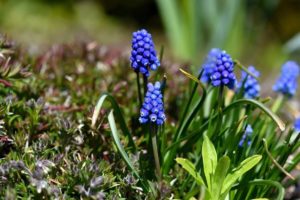 If we turn to the etymology of the name of this plant, then we can find out that it is no coincidence that it uses a derivative from the word "musk", since such characteristic musky smell.
If we turn to the etymology of the name of this plant, then we can find out that it is no coincidence that it uses a derivative from the word "musk", since such characteristic musky smell.
The vast majority of plants that represent the family of these flowers are used as ornamental. Muscari includes order 60 types of bulbous... For flower growers, this plant is interesting because of its spike-shaped flower, decorated with small bells.
This allows you to transform any flower bed and give it a touch of originality. In height, mouse hyacinth can reach 10-30 cm. The formed inflorescences have a rather dense structure and resemble a bunch of grapes.
The different varieties of these flowers differ from each other in their characteristics, including color, size and others:
- M. armeniacum. In this variety, the flowers have a bright blue color, complemented by a white border.
- M. armeniacum f. alba. White flowers make this plant attractive.
- M. armeniacum Sapphire (Sapphire). It differs from other varieties in deep blue color, but due to sterility, reproduction by seeds of this muscari is impossible.
- M. armeniacum Blue Spike. This variety is distinguished by the presence of branching pedicels, which give it a special splendor. For gardeners, it is interesting for its blue color and lush inflorescences. Like the previous variety, it cannot be propagated by seed.
- M. armeniacum Fantasy creation. Of the features, it is worth highlighting the presence of double flowers that change their color from blue to green.
Most often, Armenian muscari (M. armeniacum) is grown for decorative purposes. It is distinguished by the presence of a bright blue color, the bells decorating it are up to 0.5 cm in size, the edges of which are decorated with a white border.
The plant enters the flowering phase at the end of spring, and this action lasts for three weeks. This variety can often be found in various garden compositionswhich is not surprising. After all, it stands out for its variegated color, which cannot leave anyone indifferent.
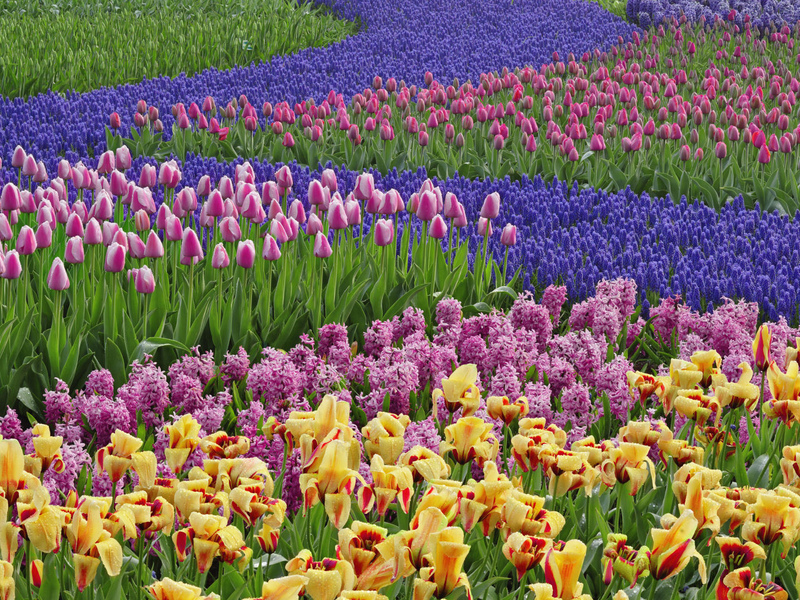
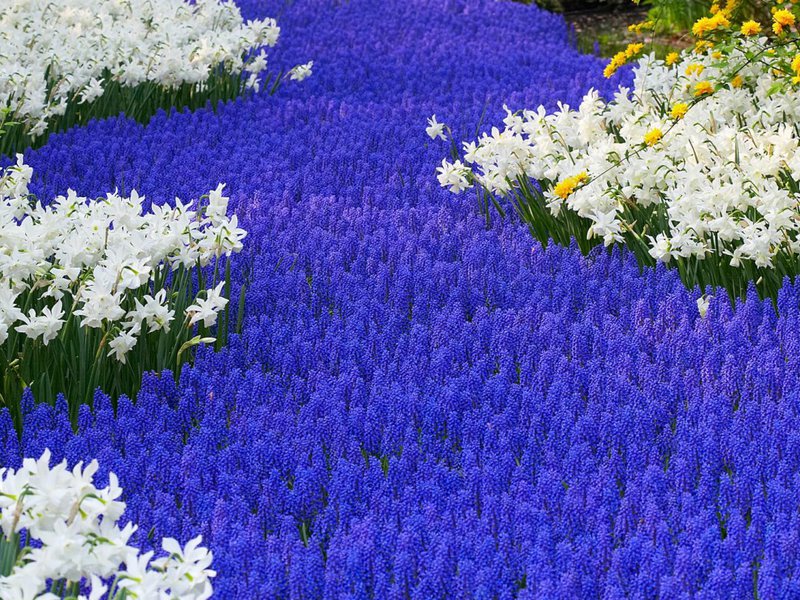
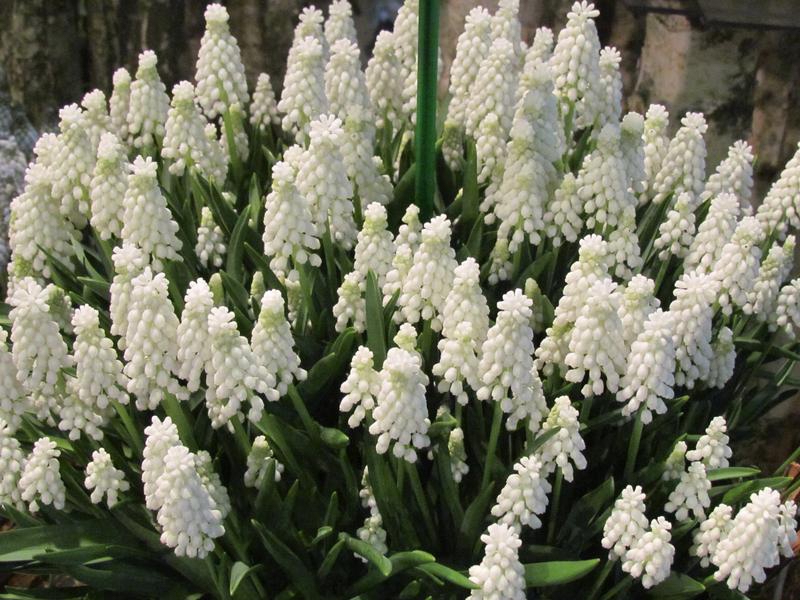
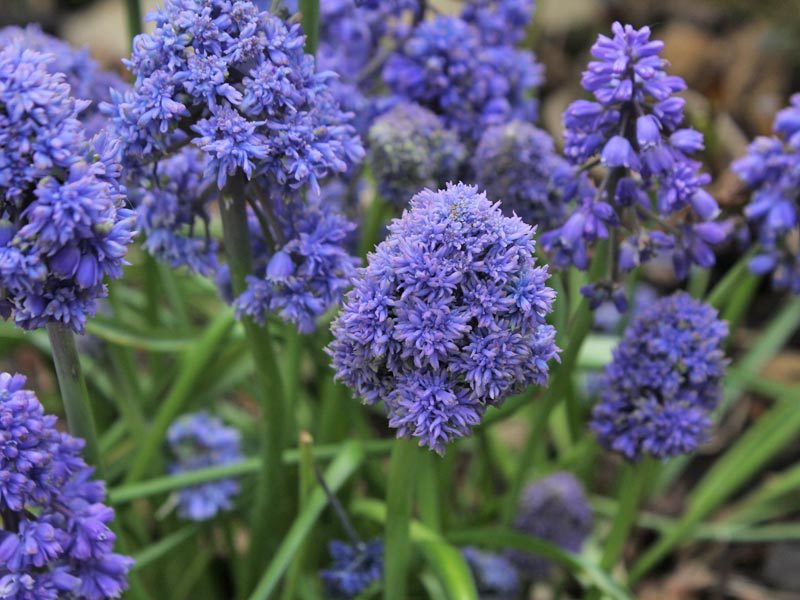

Many people also like this plant because it can be grown almost anywhere. It can even be planted under trees and shrubs, since muscari flowers appear before the leaves of large plantings.
The time allotted for muscari is enough to pass the flowering phase until the foliage of trees and bushes begins to form a shadow. When the last flowers of the muscari have fallen, this spot can be used for growing annuals.
Planting bulbs is one of fast breeding methods muscari, so after two years you can get islets of extraordinary beauty, surrounding flower beds and rock gardens, like blue lakes.
The owner can combine muscari with other colors in different ways, completely relying on his imagination. In most cases, they are complemented by other bulbous plants, for example, yellow daffodils, white or pink tulips.
Since these plants enter the flowering phase at the same time, this allows you to get an amazingly beautiful composition. Similar color combination creates extraordinary contrastfrom which you cannot take your eyes off.
Many gardeners appreciated the possibility of using the game on the contrast of color in decorating their suburban area, therefore, muscari is most often planted for such purposes.
Amazing Muscari Combinations
Seeing the muscari that twist ribbons along the paths or decorate the cascading flower beds, you get the feeling that you are in a fairy tale. Moreover, every owner can enjoy unforgettable in their beauty masterpieces, even if there are no large flower beds on his site:
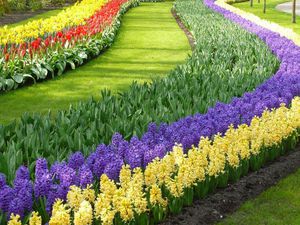 This will require small decorative buckets or outdoor pots to provide habitat for the bulbous plants. They will need to be placed in suitable places to create a romantic atmosphere. After waiting for the end of flowering muscari, they are planted in a permanent place.
This will require small decorative buckets or outdoor pots to provide habitat for the bulbous plants. They will need to be placed in suitable places to create a romantic atmosphere. After waiting for the end of flowering muscari, they are planted in a permanent place.- If, in addition to muscari, you also have a couple of unnecessary stones, then you can make a mini-garden out of these elements. They will perfectly complement each other, tulips of various varieties will look great with them.
- Muscari can be used to decorate garden paths: they are placed in a row, and white or red tulips are planted behind them, which makes the path even more unusual.
- If there are areas on your property that you don't know how to use, then plant a muscari there and you will be glad you followed this advice.
- When arranging a rock garden, it is imperative to add muscari to it. The most spectacular are the flower beds, which are planted with blue muscari with a white border, evoking associations with blue skies and snow-capped mountains.
Muscari can be planted not only in the most prominent place of the rock garden, but also on the outskirts, since they will look good anywhere.
You can enjoy muscari not only at your dacha, but also at home. It's enough to plant them in a small pot on the window... However, after flowering is complete, the plants must be planted in the ground.
Features of growing muscari
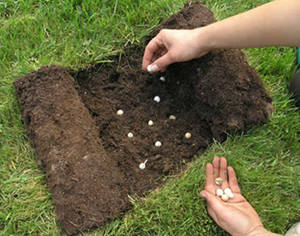 Photos of these flowers can make any gardener want to plant them on the site. If you know how to care for bulbs, then you won't have any problems with muscari. They can be left in the soil for the winter, since these plants renew their leaves every year and delight the owner with bright colors.
Photos of these flowers can make any gardener want to plant them on the site. If you know how to care for bulbs, then you won't have any problems with muscari. They can be left in the soil for the winter, since these plants renew their leaves every year and delight the owner with bright colors.
Planting muscari is recommended to the most illuminated placewhere there is fertile soil. Caring for it is as easy as it is for many other bulbous plants.
A well-lit place is best suited for planting muscari, although this plant will feel normal in partial shade. It will be enough for him if the sun illuminates the earth before lunchtime. You can also advise to follow the above recommendation and plant muscari under a tree.
Then you can enjoy the flowers of this decorative culture even before the dense foliage appears. It is not recommended to choose shady places for planting, as you will not wait for it to bloom there. Indeed, in conditions of constant humidity, there is a high probability that the bulbs will begin to rot.
Tips from experienced florists
You can plant these flowers in any soil, but it is imperative to ensure good drainage. It is important to remember that high humidity has a negative effect on bulbous plants.
Therefore, if you are going to plant it in moist soil, where there is a small shade, then it will not hurt to put it in the holes before burying the bulbs. small amount of gravel.
Muscari is not very demanding on moisture, since its needs are mostly met by water formed in the spring as a result of melting snow. During the season, muscari can feel good if the intervals between waterings are small.
You need to be especially careful at the moment when the muscari enters the flowering phase, since in this case you need monitor the state of the earth and water it if necessary.
This plant is highly resistant to various diseases, since, due to its specific smell, many pests bypass it.
Muscari: planting and leaving
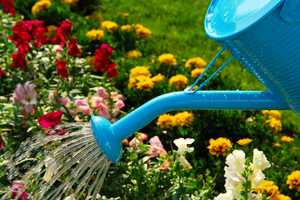 After it became clear to you where it is better to plant muscari, it is time to get acquainted with the agricultural techniques of its planting. When planting for the first time, it is advisable to place the bulbs at a distance of 5-7 cm from each other. Subsequently, their can be slightly thinned out.
After it became clear to you where it is better to plant muscari, it is time to get acquainted with the agricultural techniques of its planting. When planting for the first time, it is advisable to place the bulbs at a distance of 5-7 cm from each other. Subsequently, their can be slightly thinned out.
When determining the planting depth, it must be assumed that it should correspond to twice the height of the bulb.
There are a few basic points to consider when growing muscari:
- it is necessary to place the bulbs at a distance of 5-7 cm from each other;
- the bulbs should be buried 5 cm;
- it is best to plant in autumn - in September-October.
Before planting these flowers, you must place them in a one percent solution of potassium permanganate for half an hour. Muscari is a cold-resistant crop, however, it is also necessary to leave them in the ground for the winter because this is one of the requirements of the agricultural technology of their cultivation.
It is recommended to plant these flowers from September to the end of October. However, in some cases it is allowed to postpone this operation until spring. Before planting, the bulbs must lie in the dark cool location.
If you need muscari for planting in spring, then you can only find flowering bulbs. Although this condition does not predispose to planting, however, if your desire to plant them at this time is so great, you can try.
Muscari attracts many gardeners who try to pay great attention to the beauty of their site. And in this regard, this plant fully meets their expectations, since it is capable decorate any flower bed... Growing these flowers is not that difficult.
If bulbous plants grow in your country house, then you will not have any difficulties with muscari. Moreover, caring for this plant is not burdensome, because it no need to dig for the winter... With the onset of spring, in the very first days of your arrival at the dacha, you will be able to admire the first blossoming flowers.
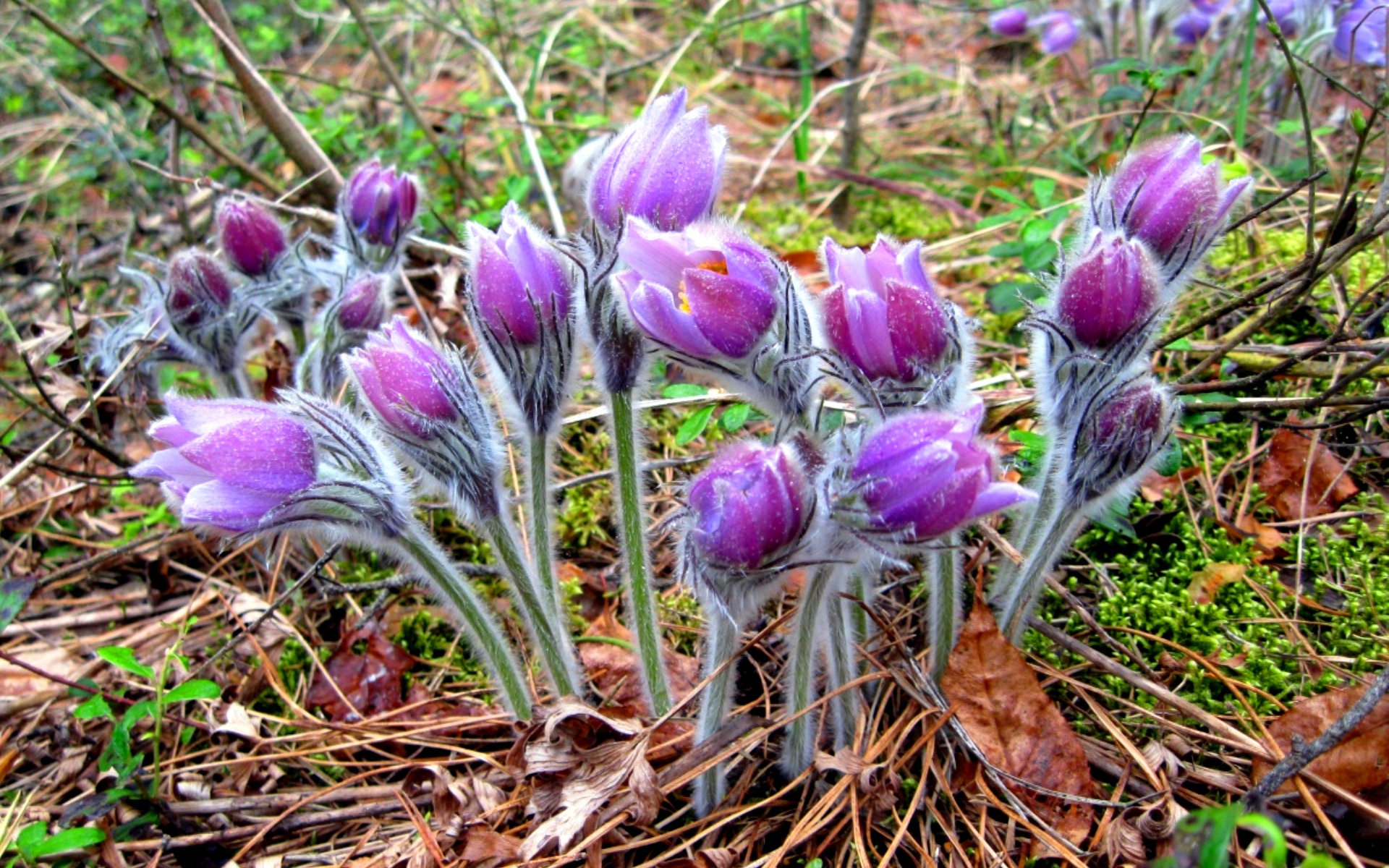
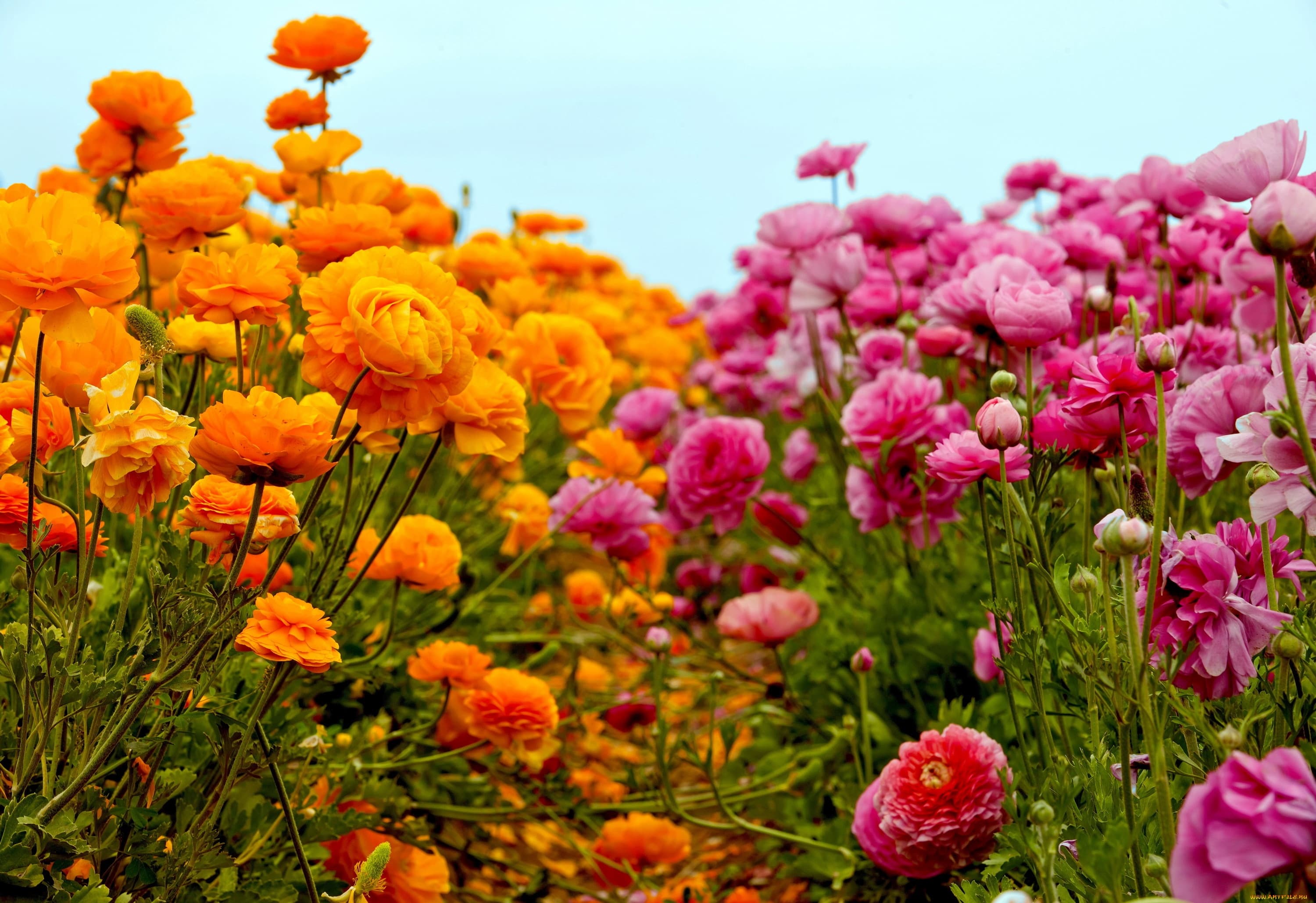
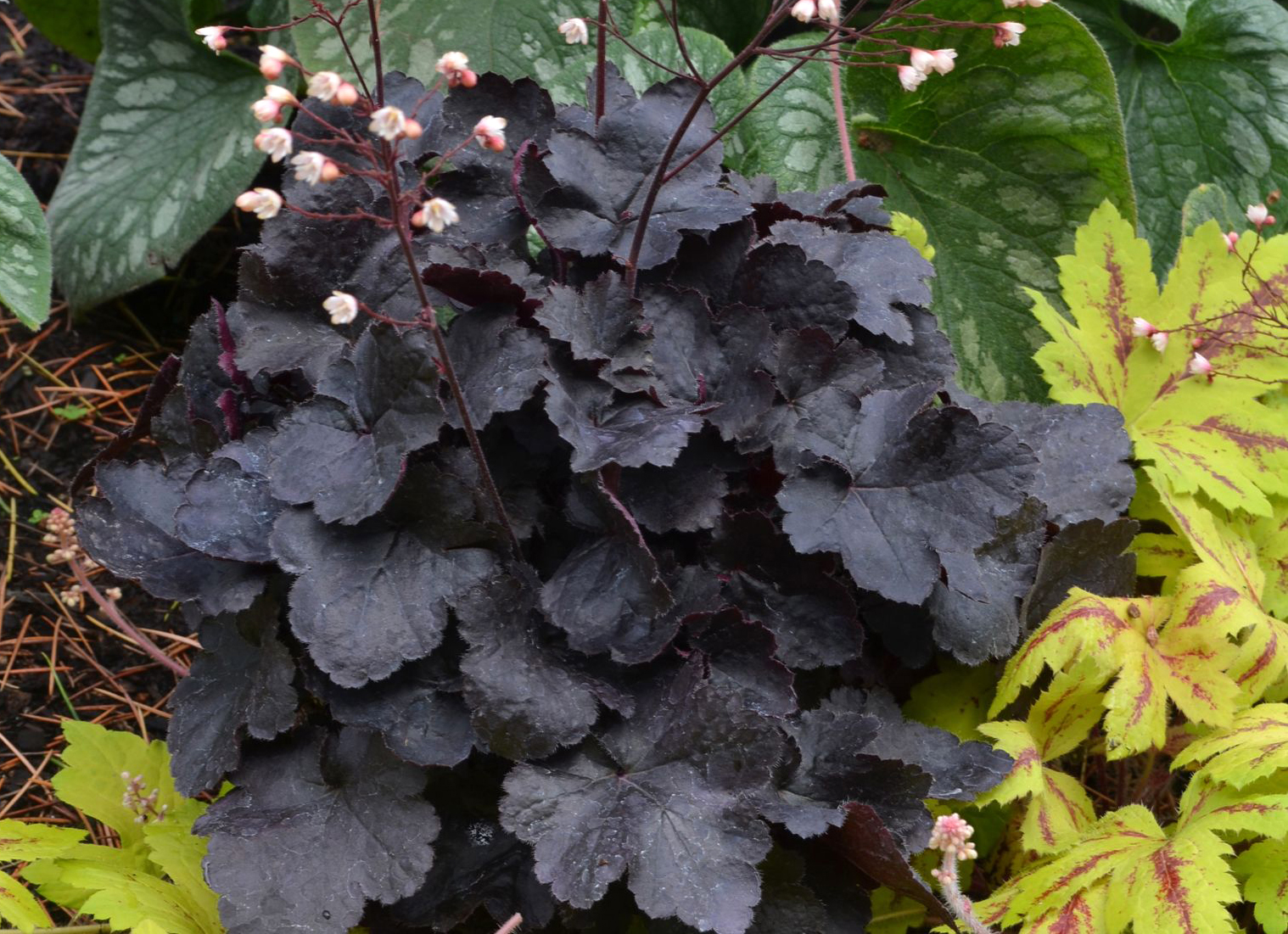
1 comment